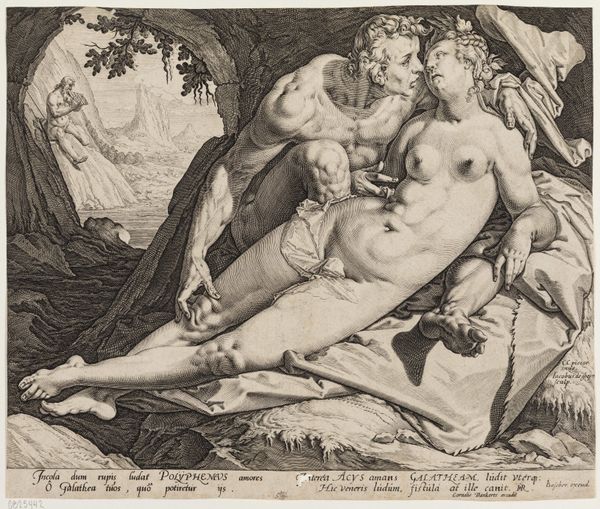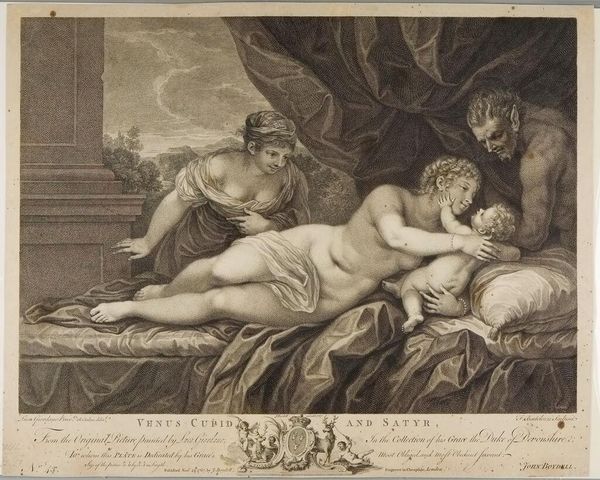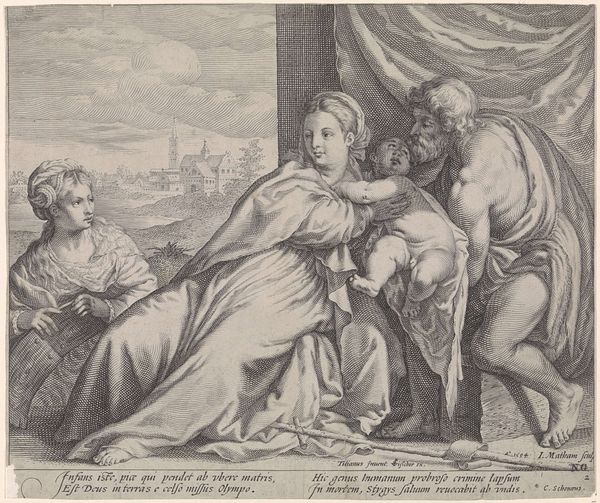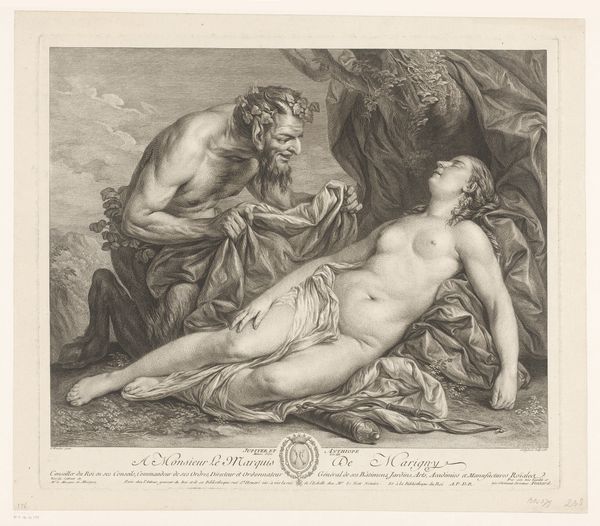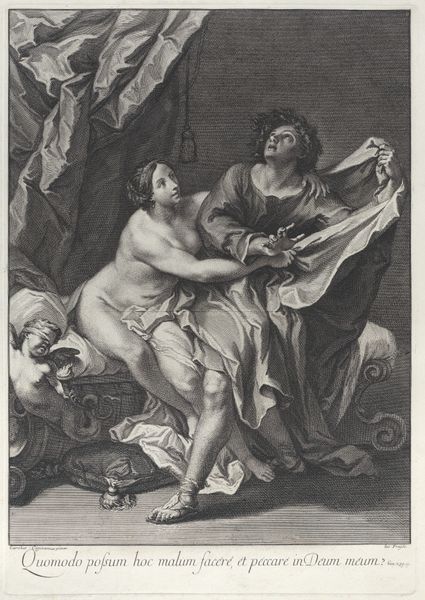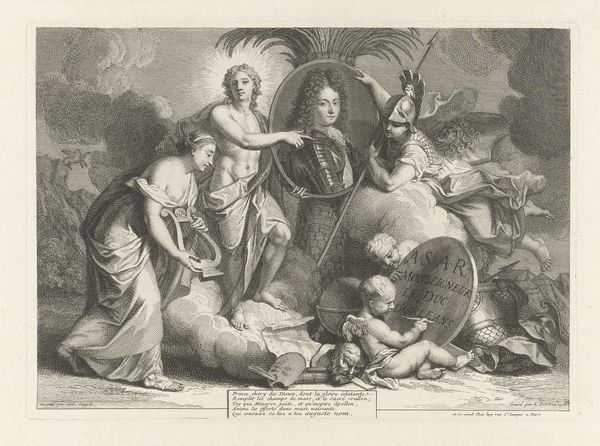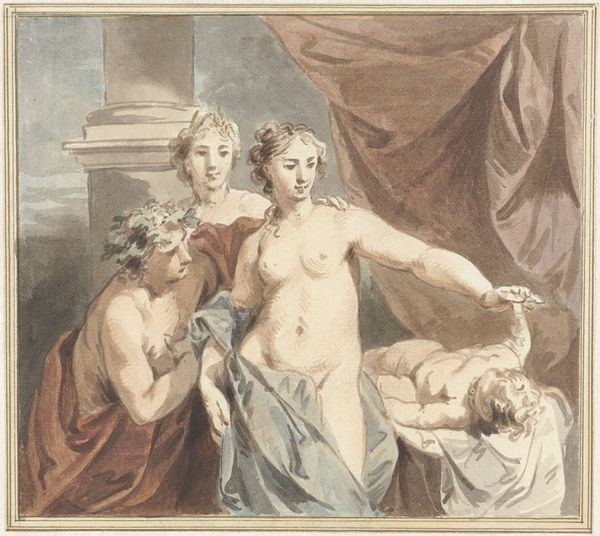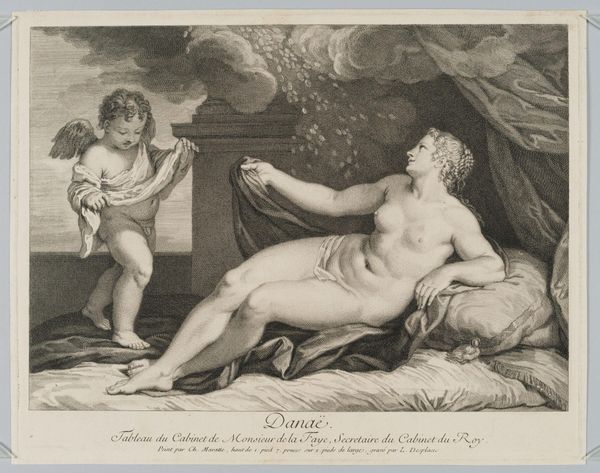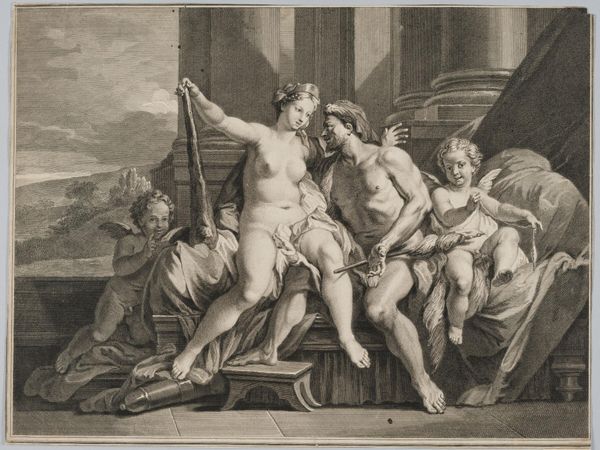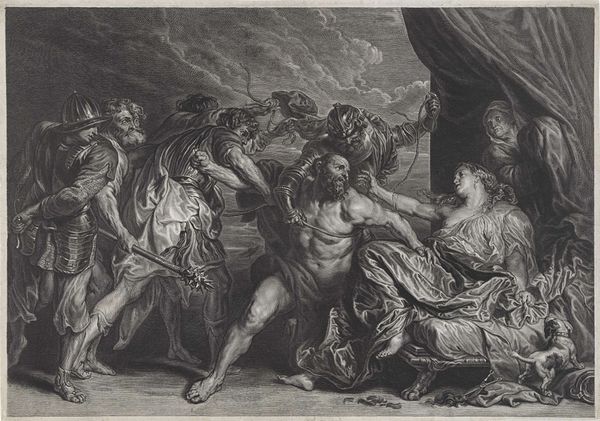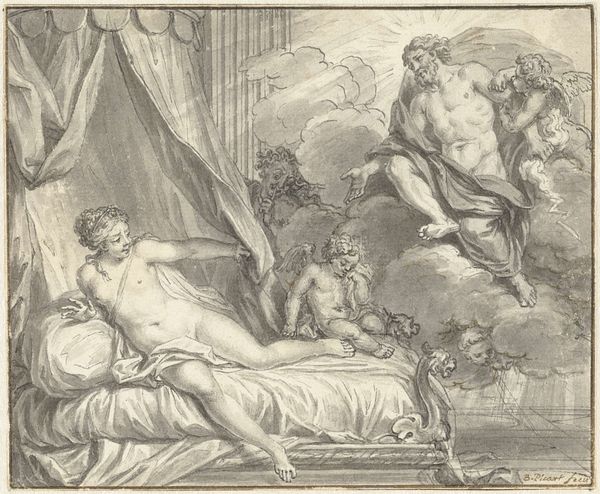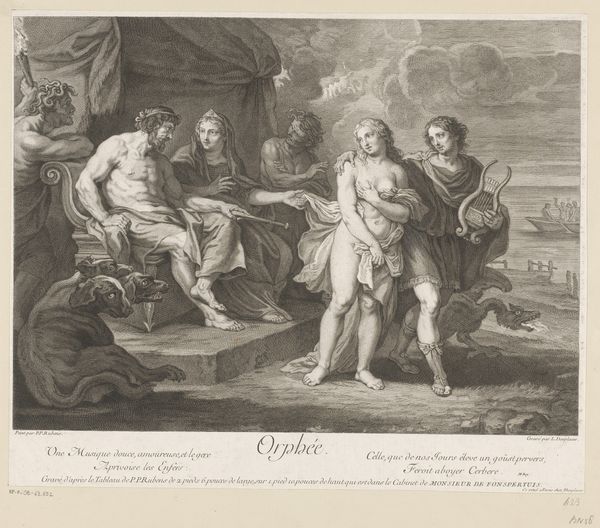
engraving
#
baroque
#
figuration
#
islamic-art
#
genre-painting
#
history-painting
#
nude
#
engraving
Dimensions: height 205 mm, width 282 mm
Copyright: Rijks Museum: Open Domain
Cornelis Bloemaert made this print, “Jozef en de vrouw van Potifar,” sometime in the 17th century. It’s made using a technique called engraving, which is all about the skillful manipulation of metal. Think of the engraver as a kind of sculptor in reverse. Instead of building up the image, they carve away at a copper plate with a tool called a burin, creating grooves that will hold ink. The pressure of the hand, the angle of the tool - every tiny adjustment impacts the final result. You can see the precision in the fine lines that define the figures' bodies, and especially the swirling drapery. Engraving was an essential medium for disseminating images. This particular print tells a biblical story. But beyond that, it demonstrates the crucial role of skilled labor in image-making during this period. It was through this process that visual narratives gained wide circulation, influencing cultural values and aesthetic tastes. So, next time you look at an engraving, remember the artistry and labor involved in bringing these images to life, and its place in the broader social landscape.
Comments
No comments
Be the first to comment and join the conversation on the ultimate creative platform.
